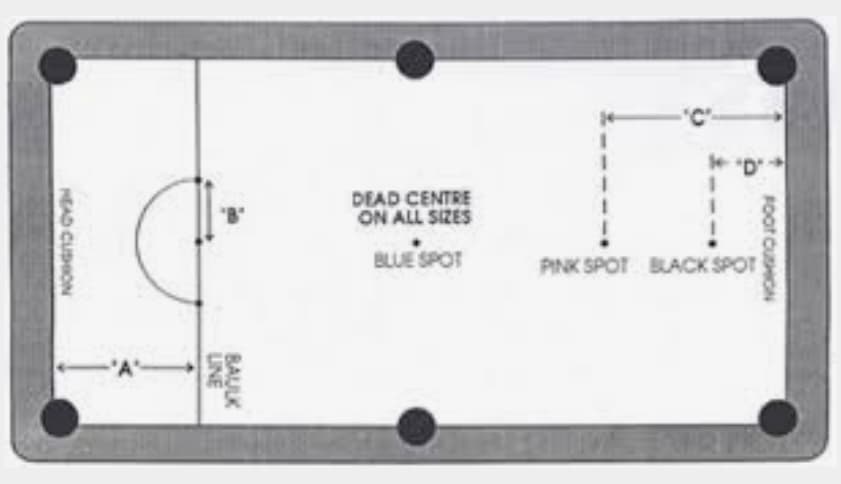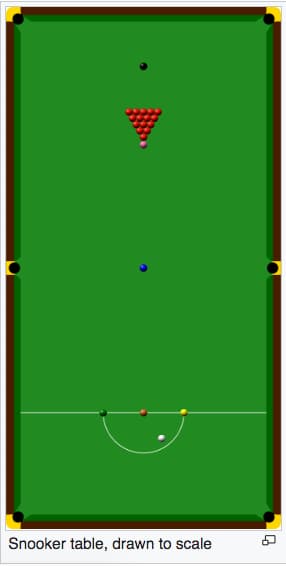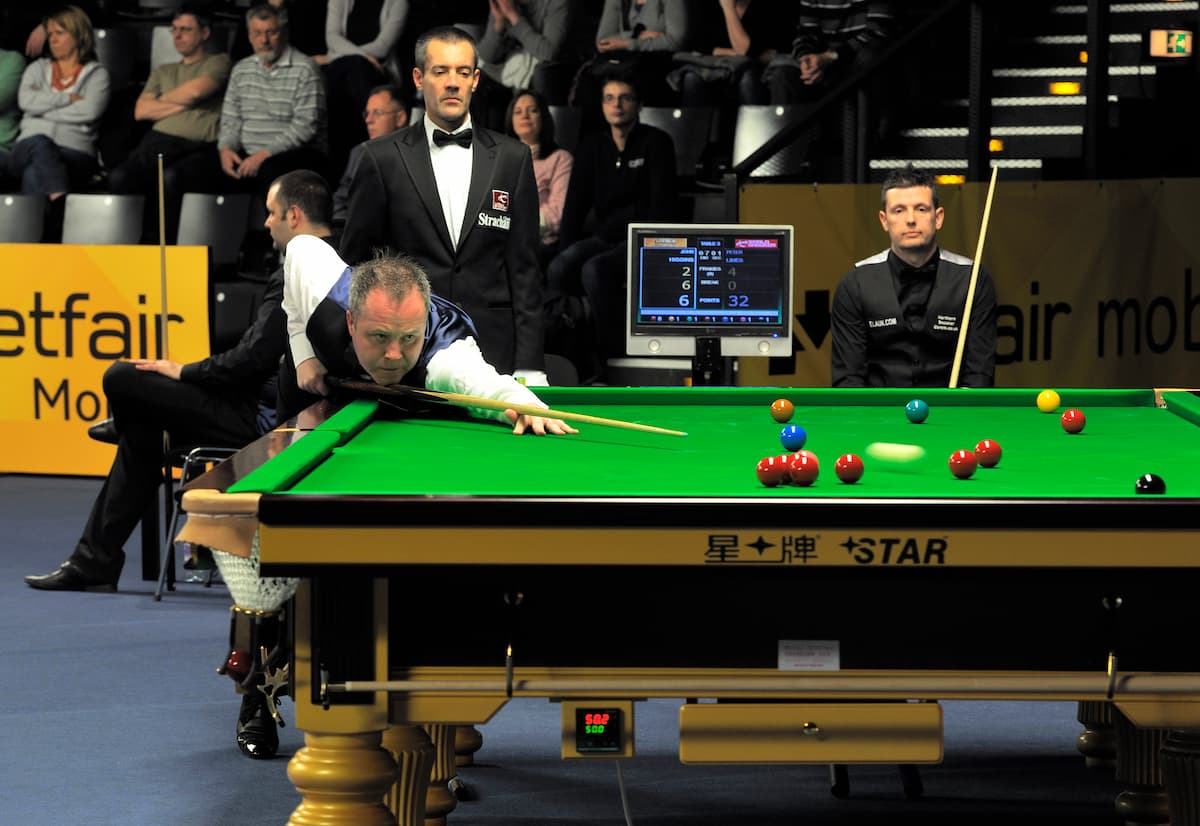
Some billiards tables come marked with spots and lines for popular games like pool and snooker. The markings on a snooker table allow for both gameplays—but not vice versa.
Want to Mark Your Own Lines on a Pool Table?
If you buy a virgin table, we recommend hiring a pro to decorate it. Doing it yourself with stickers and markers is difficult. A single slip can be costly and irreversible!
Whether or not you choose to mark the table yourself, you’ll need to understand a few terms.

- Strings: Imaginary lines that divide the pool table into quadrants. One string runs lengthwise, touching the head and foot rains; one runs widthwise, connecting the two side pockets.
- Spots: Marked points along the strings. Many tables have a single spot where the two primary strings intersect—the center.
- Lines: Drawn lines that segment the table. The baulk line appears in most games, identifying the breaking boundary. For snooker, the “D” line connects with the baulk line, forming a semicircle near the head of the table.
Popular Billiards Line and Spot Placements
The game of pool requires a single spot – the apex. It lies halfway between the foot and the center of the table. It is plotted on the longest string.
Another way to calculate the apex is to imagine a string between a side pocket and the left or right foot pocket. Where this string intersects with the one running lengthwise marks the spot.
Other common spots include (see figure):
- The pyramid for the pink snooker ball (23 inches from the foot);
- The spot for the black snooker ball (1/11th of the length of the table from the foot rail);
- The spot for the blue snooker ball (centered between the side pockets);
- The spots for the yellow, green, and brown snooker balls are at each end of the “D” line and along its semicircle.
The balkline, behind which the player shoots, is at the head of the table. It runs widthwise at roughly one-fifth of the table’s length. This equals 21 ¾ inches from the headrail on a standard 4 ½ by the 9-foot table. Many tables only include the balk line and center point.





